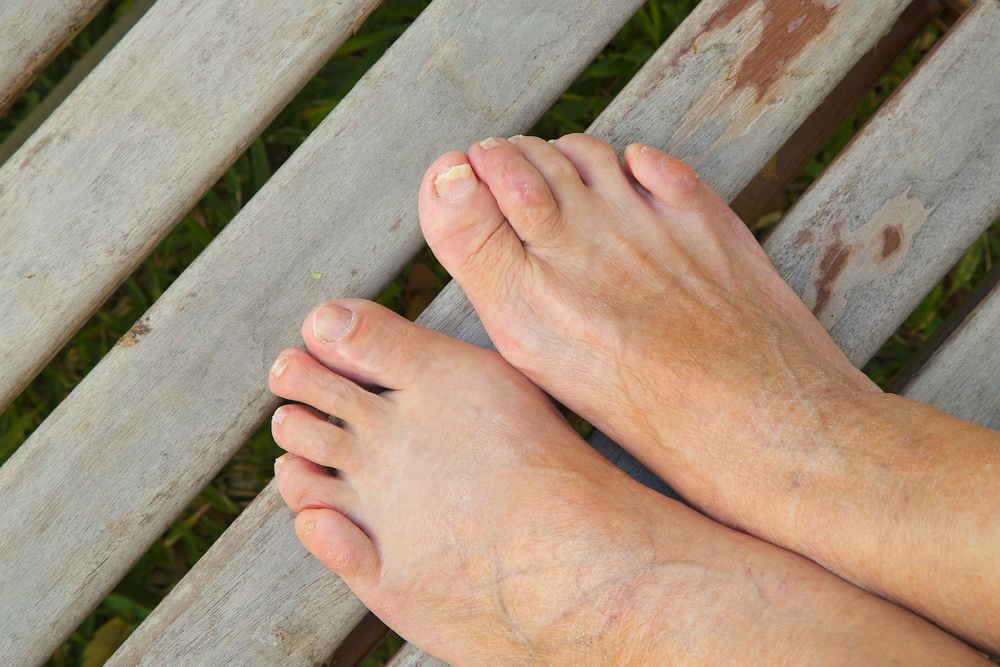Surgical Treatment of Hammertoes
Monday, 05 October 2020 00:00 Hammertoes are a foot condition characterized by an abnormal bending of the second, third, fourth, or pinky toes. This deformity of the toes can cause pain and irritation in the toes, as well as corns and calluses. There are many nonsurgical treatment options for hammertoes, including shoe modifications, splinting the toe, padding or trimming corns and calluses, and certain exercises, therapies, and medications. However, sometimes these more conservative treatments fail and surgery may become an option. There are several surgical treatment options. In a joint fusion, the cartilage surfaces of the affected joint are removed and a screw is placed into the area to prevent motion. In a phalangeal head resection, a portion of the phalanx bone is removed and tension in the affected tendon is released. There are also tendon transfers, in which the tendons that are too tight may be cut or transferred to relieve tension and straighten the toes. To find the best treatment for your hammertoes, please consult with a podiatrist.
Hammertoes are a foot condition characterized by an abnormal bending of the second, third, fourth, or pinky toes. This deformity of the toes can cause pain and irritation in the toes, as well as corns and calluses. There are many nonsurgical treatment options for hammertoes, including shoe modifications, splinting the toe, padding or trimming corns and calluses, and certain exercises, therapies, and medications. However, sometimes these more conservative treatments fail and surgery may become an option. There are several surgical treatment options. In a joint fusion, the cartilage surfaces of the affected joint are removed and a screw is placed into the area to prevent motion. In a phalangeal head resection, a portion of the phalanx bone is removed and tension in the affected tendon is released. There are also tendon transfers, in which the tendons that are too tight may be cut or transferred to relieve tension and straighten the toes. To find the best treatment for your hammertoes, please consult with a podiatrist.
Hammertoes can be a painful condition to live with. For more information, contact one of our podiatrists of Accent Podiatry Associates. Our doctors will answer any of your foot- and ankle-related questions.
Hammertoe
Hammertoe is a foot deformity that occurs due to an imbalance in the muscles, tendons, or ligaments that normally hold the toe straight. It can be caused by the type of shoes you wear, your foot structure, trauma, and certain disease processes.
Symptoms
- Painful and/or difficult toe movement
- Swelling
- Joint stiffness
- Calluses/Corns
- Physical deformity
Risk Factors
- Age – The risk of hammertoe increases with age
- Sex – Women are more likely to have hammertoe compared to men
- Toe Length – You are more likely to develop hammertoe if your second toe is longer than your big toe
- Certain Diseases – Arthritis and diabetes may make you more likely to develop hammertoe
Treatment
If you have hammertoe, you should change into a more comfortable shoe that provides enough room for your toes. Exercises such as picking up marbles may strengthen and stretch your toe muscles. Nevertheless, it is important to seek assistance from a podiatrist in order to determine the severity of your hammertoe and see which treatment option will work best for you.
If you have any questions, please feel free to contact our offices located in Arlington and Mansfield, TX . We offer the newest diagnostic and treatment technologies for all your foot care needs.




